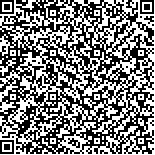| 摘要: |
| 于1988-1990年对采自青岛的蜈蚣藻、河北的蜈蚣藻节夹变型和浙江的拟厚膜藻所含多糖的产率、物理性质、化学组分和结构进行分析研究。实验结果表明,拟厚膜藻多糖无凝固性;蜈蚣藻多糖凝固性很低;蜈蚣藻节夹变型多糖有些凝固性,是三者中凝固性最好的。在粘度方面,拟厚膜藻多糖的粘度较高。碱处理后的蜈蚣藻节夫变型多糖含有K-和l-卡拉胶,还可能含有混种结构。由三种多糖的红外(IR)和13C核磁共振波谱(2C-NMR)看,它们的结构都很复杂。有待进一步研究。 |
| 关键词: 卡拉胶 红藻 多糖 |
| DOI: |
| 分类号: |
| 基金项目:国家自然科学基金资助项目,3870492号 |
附件 |
|
| STUDY ON CARRAGEENAN FROM GRATELOUPIA FILICINA, GRATELOUPIA FILICINA VAR. LOMENTARIA AND PACHYMENIOPSIS ELLIPTICA |
|
Xu Zuhong, Shi Shengyao, Li Zhien, Guo Yucai, Liu Wanqing, Zhang Xingjun
|
|
Institute of Oceanology, Chinese Academy of Sciences, Qingdao 266071
|
| Abstract: |
| Grateloupia and Elliptica are abundant in chinese coastline, but their chemical components of polysaccharides and resource have not been studied systmatically and fully utilized. In the paper, the yield, physical properties, chemical components, and structure of polysaccharides extracted from G. filicina, G. filicina var. lomentaria and P. elliptica were investigated and compared with the results of other authors. G. filicina was collected from the Qingdao beach in Nov. 1983, G. filicina var. lomentaria from the Beidaihe beach, Hebei Province, in Aug. 1984 and P. elliptica from the Zhoushan Islands in May 1983. Polysaccharide was extracted directly from seaweed without alkali treatment. G. filicina (20.00g) was washed clean, extracted with 0.1% (NaPO3)6 solution (600 ml) for an hour in a pressure cooker (9.8×104 Pa) at 110°C, then filtrated through bolting silk and fat-free cotton successively. The residue was added to 250 ml water and after half an hour, filtrated again. The filtrates were combined, dehydrated, and weighed. G. filicina var. lomentaria and P. elliptica were treated as described above. polysaccharide was extracted from alkali-treated seaweed (20.00g) with 300ml 32% NaOH solution for 5 days at 30°C, then washed until it was neutral and extracted again with 0.1% (NaPO3)6 solution (600 ml) at 110°C, the next proccess was as described above. The gel strength, viscosity, solidifying point, melting point, sulfate content, 3.6-AG content, IR and 13C-NMR were determined with the methods of Shi Shengyao et al. (1986, 1987). Without alkali treatment, polysaccharide could be adequately extracted from P. elliptica with water directly, but for G. filicina and G. filicina var. lomentaria, the yield was fairly low. The yield was increased when they were extracted with 0.1% (NaPO3)6 solution. The high yield of over 30% was obtained from seaweed without treatment by alkali, the highest yeild was 36.4% from P. elliptica. This indicated that some polysaccharide was destroyed during treatment with alkali, one percent solution of polysaccharide without alkali treatment failed to form gel. Its gelation ability was 0Pa. When the concentration of polysaccharide solution was raised to 3%, polysaccharide from G. filicina still failed to form gel, but from G. filicina var. lomentaria showed weak gelation ability. When 3% polysaccharide solution contained 1% KC1, the gel strength of polysaccharide from G. filicina var. lomentaria increased remarkably, at the same time, polysaccharide from alkali-treated G. filicina also showed a little gelation ability. Polysaccharide extracted from seaweed not pretreated with alkali contained 17.15% - 18.86% of sulfate. However sulfate content in polysaccharide from alkali-treated seaweed decreased to 14.04% - 14.84%, 3.6-AG content was closely associated with the gelation ability of polysaocharide. It was quite low in all the polysaccharides extracted from seaweed without alkali treatment. The lowest yield was 2.21% from G. filicina. After seaweed was treated with alkali, 3.6-AG content was all increased. Among the three seaweeds, 3.6-AG of polysaccharide from G. filicma var. lomentaria showed biggest increased (8.2l% to 16.67%). |
| Key words: Carrageenan, Red seaweed, Polysaccharide |
